
























By Todd Ware, President & Chief Executive Officer

American families expect the lights to stay on at a cost they can afford. But with the demand for electricity skyrocketing and the supply of alwaysavailable power sources at risk, the need for common sense energy policies that bolster reliability and affordability is more critical today than ever.
As an electric provider, The Energy Cooperative is committed to reliably powering our local communities. Beyond routine maintenance and updates that improve the grid's reliability, we work to address our members' needs in other ways. We do this by proactively engaging elected officials to ensure our members are well-represented in Washington, D.C.
In April, hundreds of electric cooperative leaders from across the country, including Ohio, will travel to Washington, D.C., for the National Rural Electric Cooperative Association's (NRECA) Legislative Conference. Your cooperative will be well-represented, with Nelson Smith, Board Chairman, myself and Josh Filler, VP and COO of our electric division, attending.

As we meet with elected officials on Capitol Hill, we will discuss key energy issues and priorities that impact you as our members. One of our main focuses will be on telling our story of how electric cooperatives in Ohio and across the nation ensure reliable and affordable power for our communities through a diverse supply of energy resources to meet the growing electric demand.
As we meet with members of Congress, we will detail the need to improve environmental permitting processes and cut costly and burdensome regulations–like the EPA Power Plant Rule–to accelerate the deployment and maintenance of essential electric infrastructure. We will highlight the importance of federal hydropower resources and the need to pass legislation to facilitate cooperative vegetation management efforts and reduce wildfire risks.
While much work is needed, we are encouraged to see President Trump's swift actions to address many of these issues. We look forward to working with the Trump administration and members of Congress to implement a pro-energy agenda that prioritizes reliability and affordability and strengthens our nation's grid.
Electricity is essential and underpins nearly every aspect of modern life. Understanding today's evolving energy landscape is vital as it shapes how electricity is produced, delivered and consumed.
Advocating for reliable and affordable power for The Energy Cooperative members is critical to our commitment to you. We look forward to meeting with Ohio's members of Congress in April to discuss the essential issues of energy that impact us here at home.
By Josh Filler, Vice President & Chief Operating Officer - Electric Operations

As our energy landscape evolves, electric vehicles (EVs) are becoming increasingly common on our roads. This transition represents one of the most significant shifts in transportation and energy use in decades. We want our members to have accurate and balanced information about EVs—their benefits, challenges and how they might affect your energy use and monthly electric bill.
Battery Electric Vehicles (BEVs): Fully electric vehicles with no gasoline engine that are powered solely by electricity.
Plug-in Hybrid Electric Vehicles (PHEVs): Combine a gasoline engine with an electric motor and battery. This allows them to run on either electricity or gasoline.
Hybrid Electric Vehicles (HEVs): Use a gasoline engine as the primary power source but supplement with electric power. They cannot be plugged in and recharged.
Environmental: EVs have reduced emissions, make less noise, and can reduce your carbon footprint when paired with renewable generation. Even considering the higher upfront carbon emissions required to manufacture an EV and the recycling/decommissioning at the end of its useful life, they are still generally lower than the exact lifespan of an internal combustion engine vehicle (ICEV).
Financial: It costs less to operate an EV compared to an ICEV. Electricity is cheaper than gasoline on a permile basis. For example, take an ICEV that gets 25 mpg with fuel prices at $3.00 per gallon, which is effectively $0.12 per mile. Now, let's compare that to an electric vehicle with a 100-kWh battery and a range of 300 miles, equating to 3 miles per kWh. When looking at our average cost per kWh over the last few months of $0.145 per kWh, that would equal $0.049 per mile, which is about 60% cheaper than an ICEV. The range can drop dramatically during the colder months, but let’s say it drops in half. The effective cost per mile would still be $0.098 per mile and about 20% less than an ICEV.
Another financial benefit is the reduced cost of maintenance. An EV does not require oil changes, and regenerative braking reduces wear on brakes.
Performance: EVs have instant torque with an electric motor. Since the electric drive motors do not have to shift and the weight of the car is increased, you get a smoother ride.
Considering an electric vehicle? Use this guide as you consider vehicle options.
Considering an electric vehicle? Use this guide as you consider vehicle options.
Considering an electric vehicle? Use this guide as you consider
Range and Charging: Although EV ranges have improved significantly (many models now offer 250+ miles per charge), concerns about running out of power (range anxiety) remain a psychological barrier for some potential buyers. The charging network is not yet as ubiquitous as gas stations, which makes longer trips more challenging and may require more planning. Recharging takes longer than filling up your gas tank, even with fast chargers.
Upfront Cost: An EV can cost you more at the dealership than a conventional ICEV, especially with the added cost of installing a charger at home. The batteries typically have an 8-10-year warranty, but the eventual replacement of the batteries can be expensive. Other potential challenges include living in an apartment or condominium where home charging may not be feasible and make daily driving less convenient. EVs also bring added demand to our electric system, requiring electric infrastructure upgrades over time with more widespread adoption.
Home charging can take two forms: Level 1 and Level 2. Level 1 charges from a standard 120V outlet and provides about 3-4 miles of range per hour. Level 2 charges on a 240V which could be through a hard-wired charger or one plugged into a 40A or 50A NEMA receptacle. These chargers can provide anywhere from 15-40 miles of range per hour.
BEV: 110-300 miles *full battery
PHEV: 15-60 miles on battery power *full battery (PHEVs can run on battery and/or gas power.)
Level 1:
• 110-volt service
• 3-4 miles of range per hour of charging
• Typically does not require electrical upgrades
Level 2:
• 240-volt service
• 15-40 miles of range per hour of charging
• Faster than Level 1
• May require electrical upgrades
There are some best practices to consider when charging. To lessen the impact on the power grid, try to charge during off-peak hours (10 p.m. to 6 a.m.). This not only helps alleviate congestion on the grid but also keeps the overall cost of generation down. Avoid frequent fast charging to reduce battery degradation. The slower charging time of a level 2 home charger is more gentle on the battery and helps extend the life of the battery. Try to avoid the extreme levels of the battery. Maintain the battery between 20% and 80% is best to optimize its health and longevity.
If you are considering purchasing or have purchased an electric vehicle, please let us know so we can better serve you. As more of our members buy electric vehicles, it is helpful for us to understand where they are located to ensure we have the necessary infrastructure to meet charging needs and provide reliable power to our local homes and businesses. The Energy Cooperative offers an electric vehicle charger rebate for electric members. The rebate covers $250 for Level 2 chargers. Tax credits, rebates and other incentives are available for electric vehicle purchases. Visit www.afdc.energy.gov/laws/electric-vehiclesfor-taxf-credit to learn more about federal incentives available through the Clean Vehicle Credit program.
The Energy Cooperative is here as a resource if you have any questions. Give us a call at 740-344-2102 or visit our website at www.myenergycoop.com/contact-us
• Public charging options near you
• Federal, state and local financial incentives
• Battery warranties
• Potential changes to auto insurance

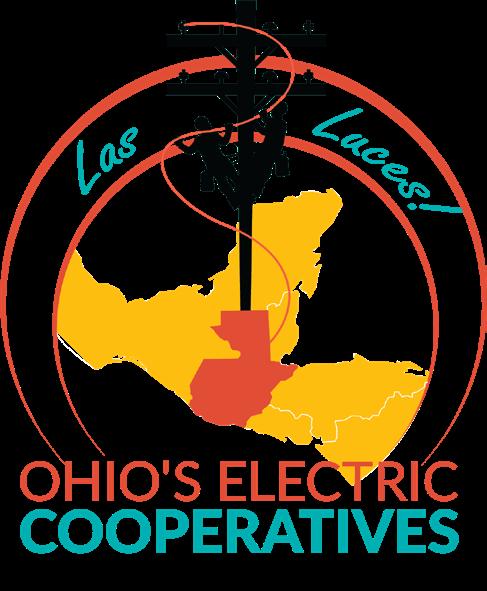
In January, lineworkers from Ohio’s electric cooperatives brought power to a village in Guatemala for the first time and donated critical supplies for the village’s children.

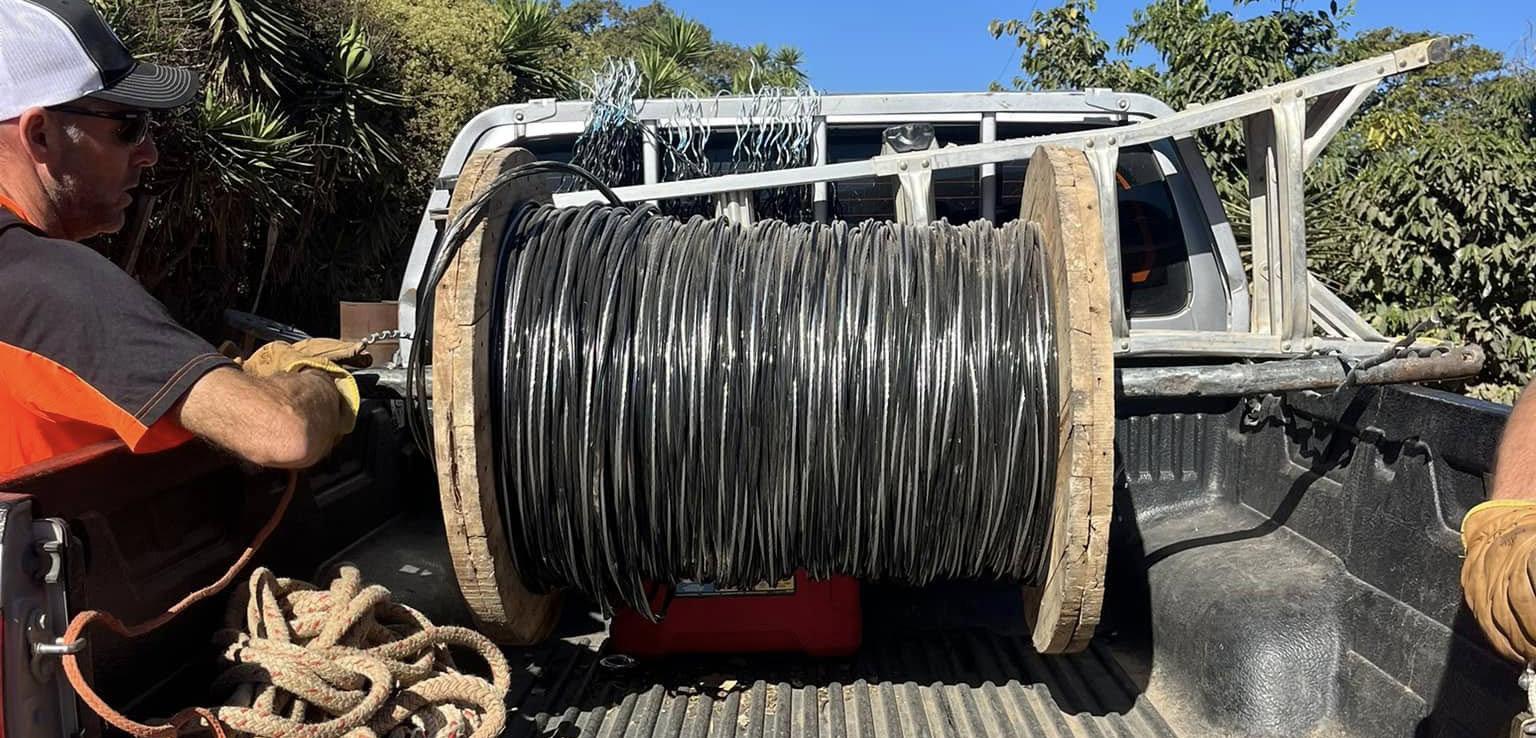

For two and a half weeks, Project Ohio crews were tasked with installing the remaining primary wire and all of the secondary conductors, internally wiring 60 homes, installing service to 90 homes, and installing 15 area lights. They also coordinated efforts to replace the septic system and installed a fence for security at the school.


We are happy to support Project Ohio and proud that one of our own, Cody Leitner, volunteered to be a part of the line crew that went to Barejones, Jalapa, to help install electric infrastructure in a village that has never had electricity.




Thank you for representing The Energy Cooperative, Cody!
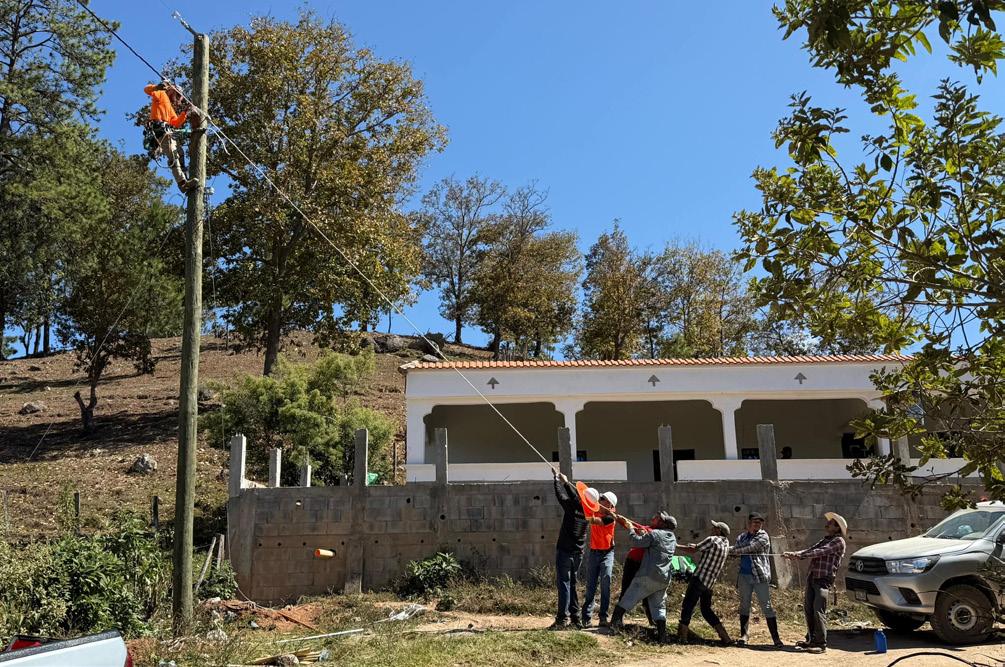
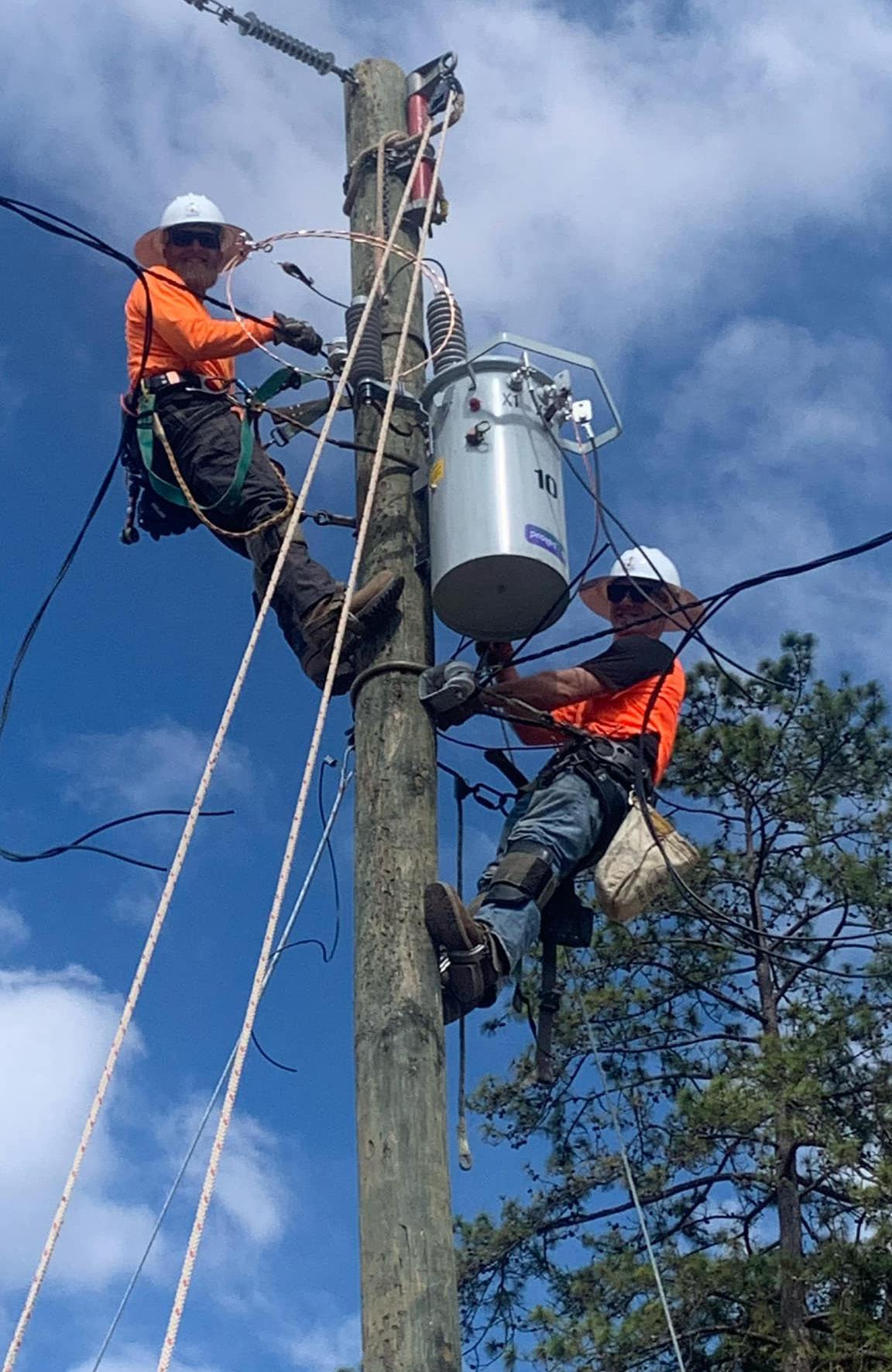


C-TEC of Licking County
150 Price Rd., Newark Monday, May 5th
Doors open at 5 p.m.
Program beings at 6 p.m.
Letusknowyou'll beattending!


Scan with your smartphone camera.
As a member of The Energy Cooperative, we encourage you to participate in the annual election for our Board of Directors. Districts 3, 4 and 7 are up for election, and the results will be announced at our Annual Meeting on May 5 th .
1. Complete the paper ballot you will receive in the mail.
2. Detach the ballot and return in the enclosed envelope.
VOTE IN SMARTHUB
Visit myenergycoop.com and click the Vote Now button. You can also vote in the SmartHub mobile app. Look for the Vote Now option.
Survey & Ballot Systems conducts the elections. Online voting runs until April 28, 2025 at 4 p.m. EST. Do not mail your ballot if you vote online.
1. Go to the website: directvote.net/tecoh
2. Enter your member number and election passcode that are located in the paper ballot you will receive in the mail.
3. Use both numbers to login and register.
4. Follow the online voting instructions to cast your ballot.
If you have any issues voting online, email support@directvote.net or call 952-974-2339.
By Nelson Smith, District 2, CCD, BLC, DGC

The fifth principle of the seven cooperative principles centers around education, training and information. This principle ensures that members, directors, managers and employees receive the necessary education and training to contribute effectively to the cooperative’s development. Additionally, cooperatives strive to inform members and opinion leaders about the nature and benefits of cooperation.
To stay abreast of current issues facing electric cooperatives across the country, along with Directors Don Hawk and Roy VanAtta, I recently attended the National Rural Electric Cooperative Association (NRECA) annual meeting.
In the context of electric cooperatives, this principle is vital. By educating our members about industry developments, legislative issues, and the benefits of cooperative membership, these organizations enable informed decision-making and active participation.
A major theme at the annual meeting was the concern over the recent Environmental Protection Agency’s (EPA) Power Plant Ruling. The NRECA has expressed significant concern regarding this rule, stating that it threatens the ability of electric cooperatives to provide reliable and affordable electricity to our members. The EPA took action on March 12th to reconsider their rule along with several other rules which could limit our ability to produce reliable electricity.
One of the primary criticisms is that the rule imposes stringent requirements on existing coal and natural gas plants to install Carbon Capture and Storage (CCS) technology. NRECA argues that while CCS has potential, it has not yet been proven viable at the scale and levels mandated by the EPA. Currently no power plant in North America utilizes CCS to the extent required by the rule. This situation could force plants unable to comply to shut down, limit operations, or switch fuels, thereby jeopardizing grid reliability.
In response, NRECA has actively lobbied against the EPA’s rule, emphasizing the potential threats to the American electric grid. The rule is described as “unlawful, unreasonable, and unachievable,” and that it exceeds the EPA’s authority and poses immediate risks to grid reliability. NRECA equips its members with the knowledge and tools to understand and address such regulatory challenges. This empowerment enables cooperative membership to engage effectively in advocacy efforts, ensuring that our interests are represented and that we can continue to provide safe, reliable and affordable energy to our members.
Our efforts to help Congress understand the importance of the reliability issue is continuous, so to take that effort to the next level, CEO Todd Ware, Vice President of our Electric Operations Josh Filler and I will join thousands of Co-op leaders from all over the country as we ascend on Washington DC next month in our annual Legislative Conference where we meet with all of our individual Representatives and Senators. Along with the power plant rule, we will also address other concerns relating to providing reliable and affordable energy and ask for their support.


He serves as a Washington Township Trustee and volunteers on the board responsible for restoring the Historic Licking County Jail.

Nelson served four years in the Navy and is a retired publisher of the Utica Herald, Heath News and The Pataskala Post.
By Connie Hogue, Vice President of Human Resources & Safety
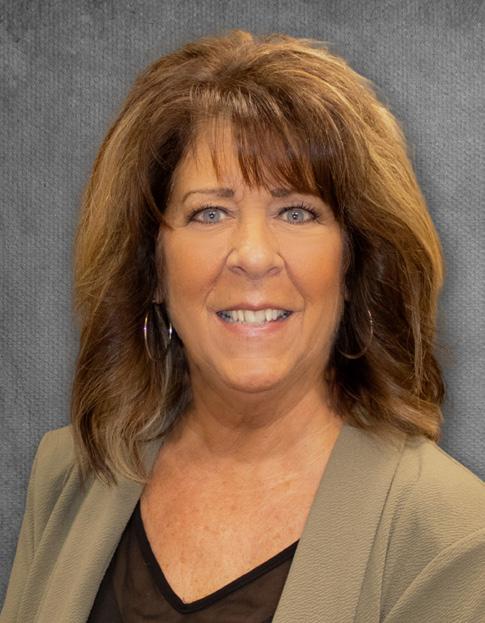
Distracted driving has become a significant issue on roads worldwide, contributing to thousands of accidents, injuries and fatalities each year. Despite increased awareness and stricter regulations, many drivers continue to engage in behaviors that take their attention away from the road. Understanding the risks associated with distracted driving is crucial to encouraging safer driving habits and reducing preventable accidents.
The consequences of distracted driving can be devastating. According to the National Highway Traffic Safety Administration (NHTSA), thousands of lives are lost each year due to distracted drivingrelated crashes. Even a brief lapse in attention— such as reading a text message—can be fatal.

So, what does it mean to drive distracted? Distracted driving can be broken down into three categories: visual, cognitive and manual.
• Visual: Any activity that diverts your eyes from the road, such as using your phone, navigating GPS, adjusting the radio, or reading billboard signs.
• Cognitive: Anything that distracts your mind from driving, including conversing with passengers, daydreaming, experiencing road rage, or being under the influence of alcohol.
• Manual: Any action that removes your hands from the steering wheel, such as texting, eating, drinking or manipulating dashboard controls.
Among these, texting while driving is one of the most dangerous because it involves all three types of distractions. Studies have shown that sending or reading a text message can take a driver's eyes off the road for about five seconds—enough time to cover the length of a football field when traveling at highway speeds.
Preventing distracted driving requires a combination of personal responsibility, technology and public awareness. Here are some strategies to reduce distractions and stay focused while driving:
• Put Your Phone Away – Keep your phone out of reach or use "Do Not Disturb" mode to avoid the temptation of checking messages.
• Stay Focused - Keep your eyes on the road and hands on the wheel at all times.
• Plan Ahead – Set up GPS directions, adjust mirrors and select music before taking off in the car.
• Use Hands-Free Technology – If necessary, use voice-activated controls or Bluetooth devices to minimize manual distractions.
• Educate Young Drivers – Teen drivers are particularly vulnerable to distractions. Parents and driving instructors should emphasize the importance of staying focused behind the wheel.
• Encourage Passengers to Help – Passengers can assist with tasks like navigation or handling calls to allow the driver to concentrate on the road.
• Avoid Eating While Driving – If you must eat, pull over to a safe location.
• Lead by Example – Experienced drivers should model good behavior by avoiding distractions and encourage passengers and fellow drivers to adopt safe driving habits.
April is Distracted Driving Awareness Month. Take a moment to ask yourself: "Is it worth it?" The answer is indisputably no. Whatever prompts you to divert your attention from driving can wait until you reach your destination.
Let us commit to driving safely not only this month but every time we are behind the wheel. Set aside all distractions and focus on the road.
By Heather Juzenas, Vice President of Marketing & Member Services

This winter was cold! It was much colder than we have seen in the past few years. The U.S. Energy Information Administration (EIA) projected this winter to be +6% colder than last year, and this has proven true for our members. The Energy Cooperative powers my family’s home in Pataskala.
Our January bill from The Energy Cooperative showed 1700 kWh of energy use, compared to 1500 kWh the previous year. This increased energy use is typical for what we have seen from our residential members this year (+10% higher than the same time last year). As overall energy use increases, we also saw member’s budget billing amounts increase.
The Energy Cooperative has around 9,000 member accounts on our budget billing program. Budget billing divides the cost of 12 months of energy use into equal monthly payments. If you are part of our budget billing program, there will be months when your energy use costs less than the budgeted amount.

This credit builds to cover the difference when your energy use costs more than your budget. Paying more than your budget goes toward the account balance and does not change your next budget payment. The Energy Cooperative does not ‘true up’ your budget account like other utilities. Instead, we evaluate your budget twice yearly and determine if it should increase or decrease based on your energy use.
The SmartHub app shows your energy use by hour, day, week, month and year. This is an excellent tool for comparing your use to previous years. However, there is much more data available to you when you access SmartHub from our website. The web-based version lets you dig much deeper into your energy history! Here is a snapshot of my home’s use comparison showing how the temperature affected my energy bill.


The SmartHub website also includes a Usage Explorer that shows how your energy use changes with high and low temperatures.

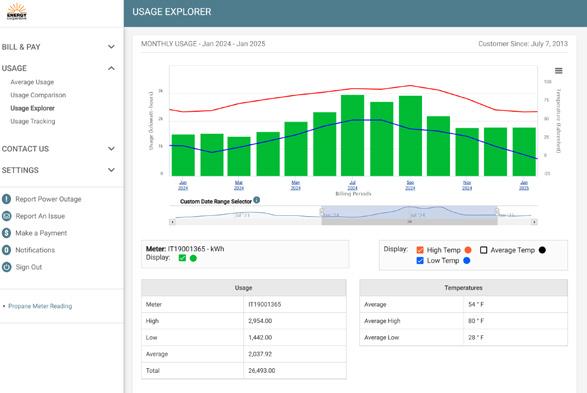
Whether you are on budget billing or not, The Energy Cooperative offers many tools to help you understand your energy use. SmartHub is one of those tools, but we also have a team of dedicated (local) member service professionals if you need us! If you have any questions, give us a call at 740-344-2102.

Homeowners and professional excavators can call OHIO811 or can easily enter their dig notification requests on their mobile devices on the OHIO811 app! Use Positive Response to see how each utility company has responded to your dig notice or use the near ticket feature to find out if there are excavations taking place near your current location.
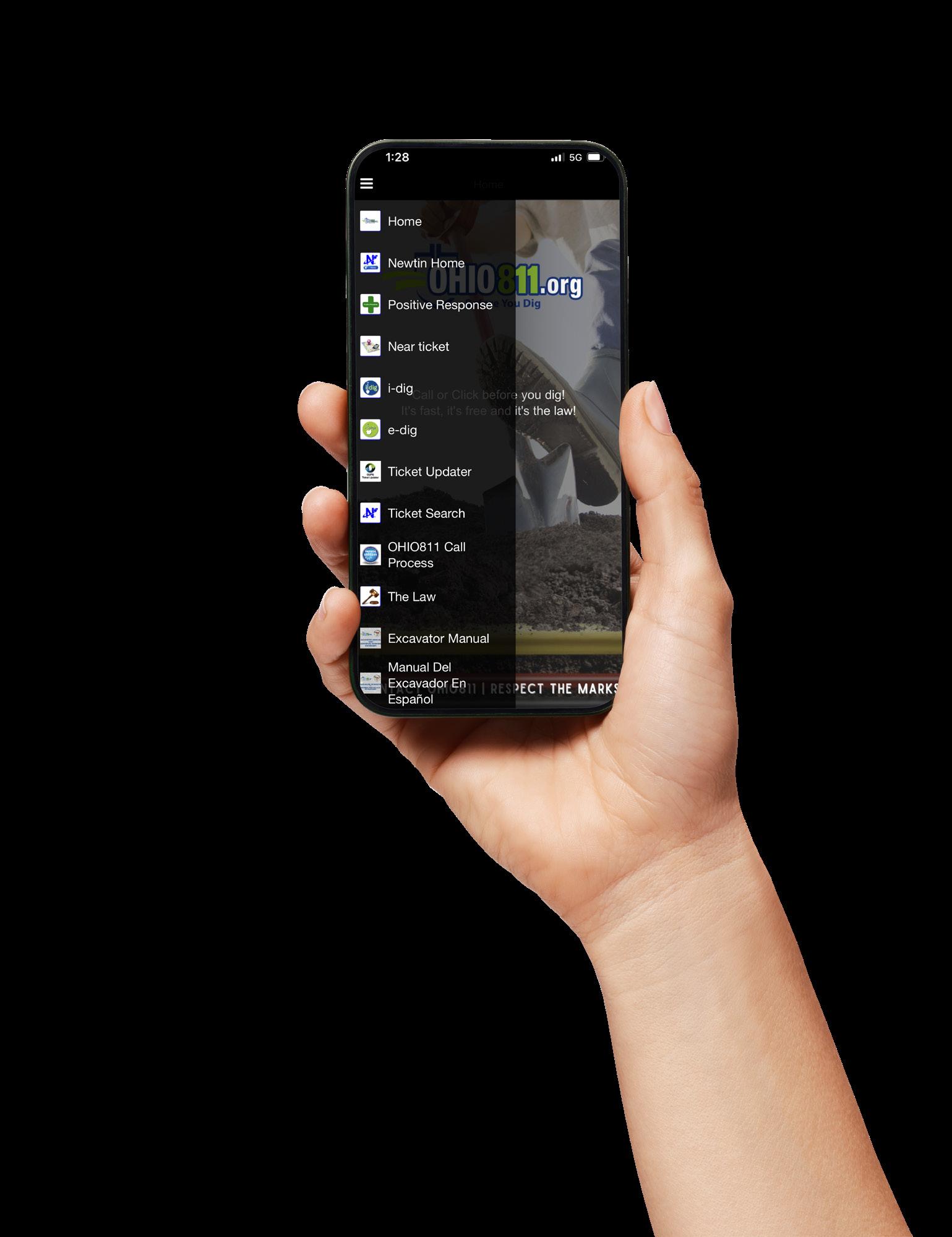
By Dan McVey, Vice President & Chief Operating Officer — Gas Operations

Natural gas and propane are efficient energy sources for heating, cooking and powering various appliances in our homes and businesses. Gas appliances are generally safe when used correctly, although improper handling or equipment malfunction can lead to gas leaks, fires and carbon monoxide (CO) poisoning. Following best practices when using and maintaining gas appliances is vital to ensure your safety.
It is extremely important to notice natural gas and propane leaks. Both fuels are odorless, but an additive called mercaptan gives them a distinct rotten egg smell to help detect leaks. If you notice this odor:
• Leave the area immediately. Do not use electrical/light switches, phones or anything that could create a spark.
• Do not light matches or smoke. Even a tiny flame can ignite the gas.
• Shut off the gas supply only if it is safe to do so. The main shutoff valve is typically located near the meter or propane tank.
• Call 911 and your gas provider. Do this from a safe location. Never assume someone else has reported the leak.
A licensed professional should always install gas appliances to ensure they meet safety standards. Proper ventilation is also critical to prevent CO buildup. Here are some key installation and ventilation tips:
• Ensure appliances are installed correctly. Poorly installed appliances can cause gas leaks or inefficient combustion.
• Provide adequate airflow. Gas stoves, furnaces and water heaters require proper ventilation to avoid CO accumulation.
• Avoid using unvented appliances indoors. Propane space heaters and some gas stoves can produce CO if not vented correctly.
Routine maintenance is essential for keeping your gas appliances running safely and efficiently.
• Schedule annual professional inspections. A qualified technician can check for leaks, test connections and clean components.
• Clean burners and vents regularly. Dust, dirt and debris can clog burners and obstruct ventilation.
• Replace aging appliances. Older gas appliances may not have modern safety features and could develop leaks over time.
Carbon monoxide is a colorless and odorless gas produced by incomplete combustion of natural gas or propane. Breathing carbon monoxide at high levels can be fatal. You can take preventative measures when you:
• Install CO detectors. Place them near sleeping areas and all gas appliances.
• Test CO detectors monthly. Replace the batteries every six months.
• Know the symptoms of CO poisoning. They include headaches, dizziness, nausea and confusion. If you suspect CO exposure, leave the area immediately and call 911.
Beyond installation and maintenance, following safe natural gas use habits can help you avoid preventable accidents.
• Never use gas ovens for heating. They can produce dangerous CO levels.
• Always turn off appliances when not in use. Leaving gas stoves or space heaters on while unattended increases fire and CO risks.
• Keep flammable items away. Store combustible materials away from gas appliances.
Following these safety tips can reduce the risk of gas leaks, fires and carbon monoxide exposure in your home. Always prioritize regular maintenance, proper installation and emergency preparedness to keep your household safe when using natural gas or propane appliances.
By Pat McGonagle, Vice President & Chief Financial Officer

Electric cooperatives (ECs) are nonprofit organizations established to provide electric power to rural areas, often where investorowned utilities (IOUs) have been reluctant or unwilling to extend service due to low population density and high infrastructure costs. Cooperatives are an integral part of the American rural landscape, ensuring that millions of people in rural and remote areas have access to electricity, which is crucial for modern living. One of the distinguishing features of ECs is their tax-exempt status under federal law, which is pivotal to their operation and continued service to rural communities. This exemption allows cooperatives to keep costs lower for their members and helps ensure that rural areas continue to receive the electricity they need at reasonable rates.
The history of electric cooperatives dates back to the 1930s during the Great Depression, when rural areas in the United States were largely underserved by electricity providers. Most electric companies were focused on urban areas where the population density was higher, and thus, the cost of providing electricity was more profitable. The Rural Electrification Act (REA) of 1936 was a key turning point, providing federal loans and support to help rural communities create cooperatives that could build and operate electrical distribution systems.
Cooperatives were intended to address the economic and social disparities between urban and rural areas. Today, ECs serve over 42 million people, delivering power to approximately 75% of the nation’s landmass. Cooperatives are governed by members who elect a board of directors, and the structure ensures that profits are reinvested into the cooperative rather than distributed to external shareholders, as is the case with private utilities.
Electric cooperatives are generally tax-exempt under federal law because of their unique nonprofit structure. Unlike for-profit utilities, ECs are organized as memberbased, nonprofit organizations.
The Internal Revenue Code (IRC) grants cooperatives tax-exempt status under Section 501(c)(12), a provision specifically designed for mutual or cooperative organizations that provide services to their members.
Several factors contribute to this status:
1. Nonprofit Purpose: The primary reason for the tax exemption is the nonprofit nature of electric cooperatives. ECs are formed to benefit their members rather than to generate profits for external investors. Any surplus revenue generated by the cooperative is reinvested into the operation of the cooperative or used to reduce costs for members, rather than being distributed as profits to shareholders. This structure aligns with the cooperative’s goal of serving the community rather than maximizing profit.
2. Service to Members: The tax-exempt status is also based on the fact that cooperatives provide a service that benefits their members directly. The primary goal of ECs is not to generate profit but to provide reliable electricity to their members, often in underserved rural areas. This ensures that the operations are focused on member needs rather than the financial objectives of outside investors.
3. Historical Precedent: When the REA was created in the 1930s, it recognized that rural communities would have difficulty attracting private investors to build and operate electric infrastructure. The government thus incentivized the creation of ECs, offering them special status and support, including tax exemptions, as a means to encourage the expansion of rural electrification.
Electric cooperatives play a critical role in delivering affordable and reliable electricity to rural communities across the United States. The tax-exempt status reflects their nonprofit nature, with a focus on providing member-centric services, and a long history as a solution to the challenges of rural electrification. By being exempt from federal taxes, ECs can maintain low operating costs, reinvest into the cooperative’s infrastructure, and keep electricity prices affordable for their members. The electric cooperative model helps ensure that rural America remains connected to the power grid, promoting economic development and improving quality of life for millions of rural residents.
By Scott Stitts, Vice President & Chief Information Officer

Smart devices can enhance your life and improve your home’s efficiency. However, myths surrounding this technology may be holding you back from embracing a "smarter" home.
Let us clarify the facts and debunk these misconceptions about smart tech.
While some smart home devices can be pricey, many budget-friendly options exist. Smart home hubs and speakers are excellent introductory devices that easily fit almost any budget. Smart power strips and light bulbs are also affordable options that can help simplify your life.
Smart home devices can streamline your daily activities and make life easier. With connected smartphone apps, remote controls or voice commands through smart speakers, anyone can manage smart devices in their home.

Unfortunately, this is not the case. Device incompatibility is a significant challenge people face when setting up a smart home. Different brands may not communicate with one another or may use less standard communication protocols. When selecting a new smart device, ensure its compatibility with your existing smart home technology.
Many companies that manufacture smart devices implement strong safeguards to encrypt and protect your personal information. However, if privacy is a concern, you can take precautions like using complex passwords, regularly updating devices, and utilizing secure Wi-Fi networks.
Some people believe that adding more electronics to your home will only raise energy bills, but smart devices help conserve energy. For instance, smart power strips can cut power to unused electronics, smart thermostats can adjust temperatures when you are away, and smart bulbs can be programmed to turn off at specific times.

Integrating smart technology into your home does not have to be overwhelming or costly. By familiarizing yourself with the facts and dispelling common myths, you can make informed choices that enhance your daily life while supporting energy efficiency. There is a smart device for nearly every budget and requirement, from smart bulbs to thermostats. Smart devices contribute to a more sustainable lifestyle by actively managing your energy usage.
Because of our members who round up their bills to the next whole dollar each month, The Energy Cooperative's Operation Round Up Foundation has proudly contributed over $5 million to organizations in the communities we serve.
The Operation Round Up Foundation awarded $20,059 to the following community organizations in February 2025:
The Abbot Home to purchase utility carts
TouchPoint Marriage & Family Resources to buy a copier
Mary Ann Township Fire Department to purchase a PPV fan
Newark Catholic High School towards music production supplies
Utica Redskins Athletic Boosters towards strength training equipment
Thorn Township Fire Department to purchase bullet proof vests
Our members generosity truly makes a difference!

Do you know an organization that could benefit from a grant? Scan the QR code with your smartphone or visit myenergycoop.com/roundup.

The Energy Cooperative’s Operation Round Up Foundation started in 2005 as a way to give back to member communities. The program rounds up members' bills to the nearest dollar and that money goes to the foundation, which donates it to local charities, community groups and scholarship recipients. Although you might not think about it often, Operation Round Up significantly helps your community. This year, we want to highlight a few of the grant winners and show you how Operation Round Up continues to make a positive impact!
""HopeNow Furniture Bank of Knox County collects donated new and gently used furniture that is distributed to families in Knox County who cannot afford to furnish their homes. The Energy Cooperative's Operation Round Up Foundation has been an integral partnership for the HopeNow efforts.
The grants from Operation Round Up have fully funded the purchase of a brand-new lift truck battery which is used daily to lift and load heavier furniture items for clients. Without the use of the lift truck, the services would be severely diminished.
Operation Round Up was also a key contributor in purchasing mattresses for the HopeNow Beds for Kids program. The donation was used to purchase approximately 12 twin mattresses that were then available for families served in 2024.
Without a crucial collaboration from The Energy Cooperative and the Operation Round Up Foundation, HopeNow would not be able to serve the community as we do.
We are thankful for all the donors who made the 2024 year successful and look forward to an even better 2025!"
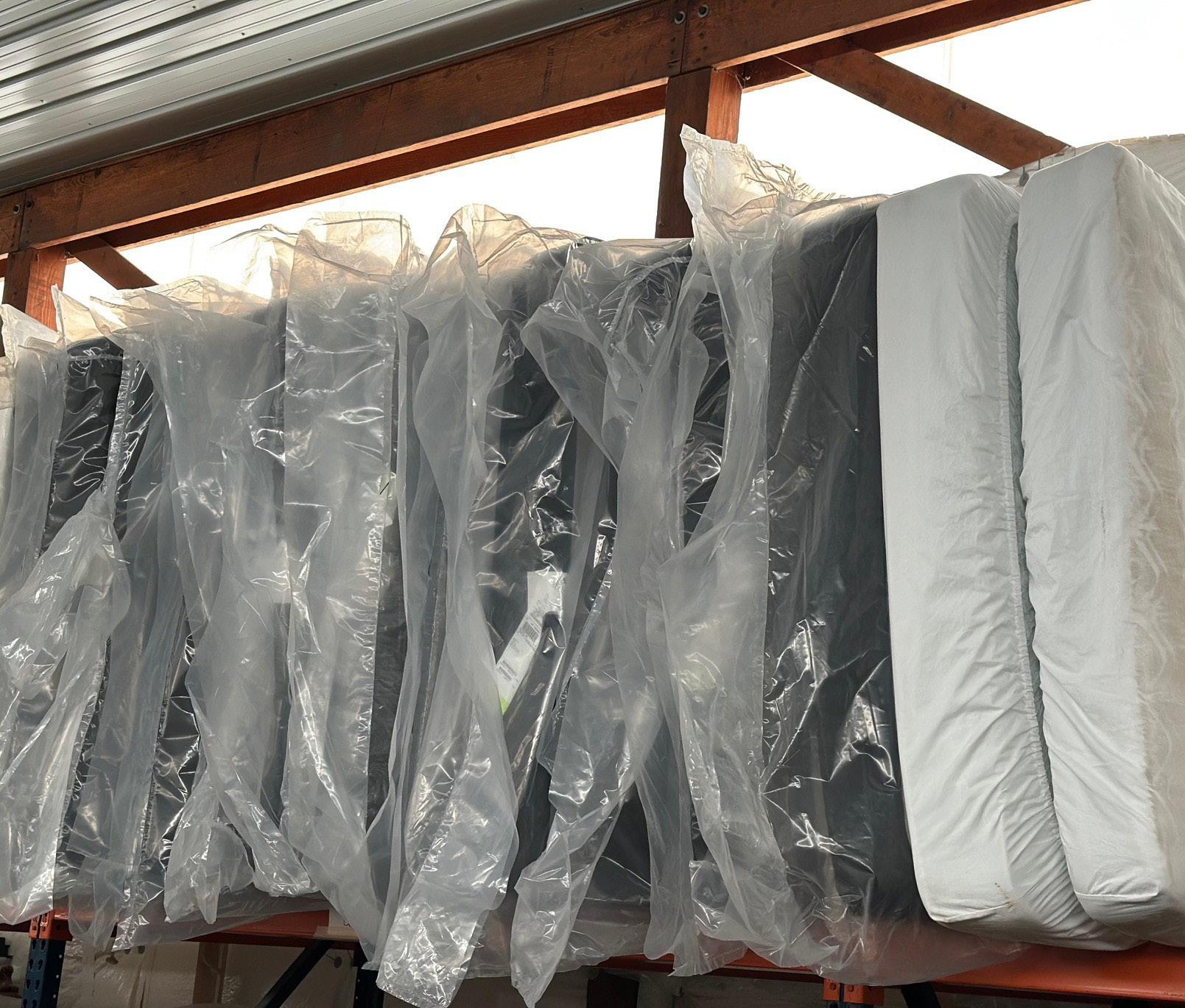
"-Nikki Alfrey, Office Manager, HopeNow Furniture Bank

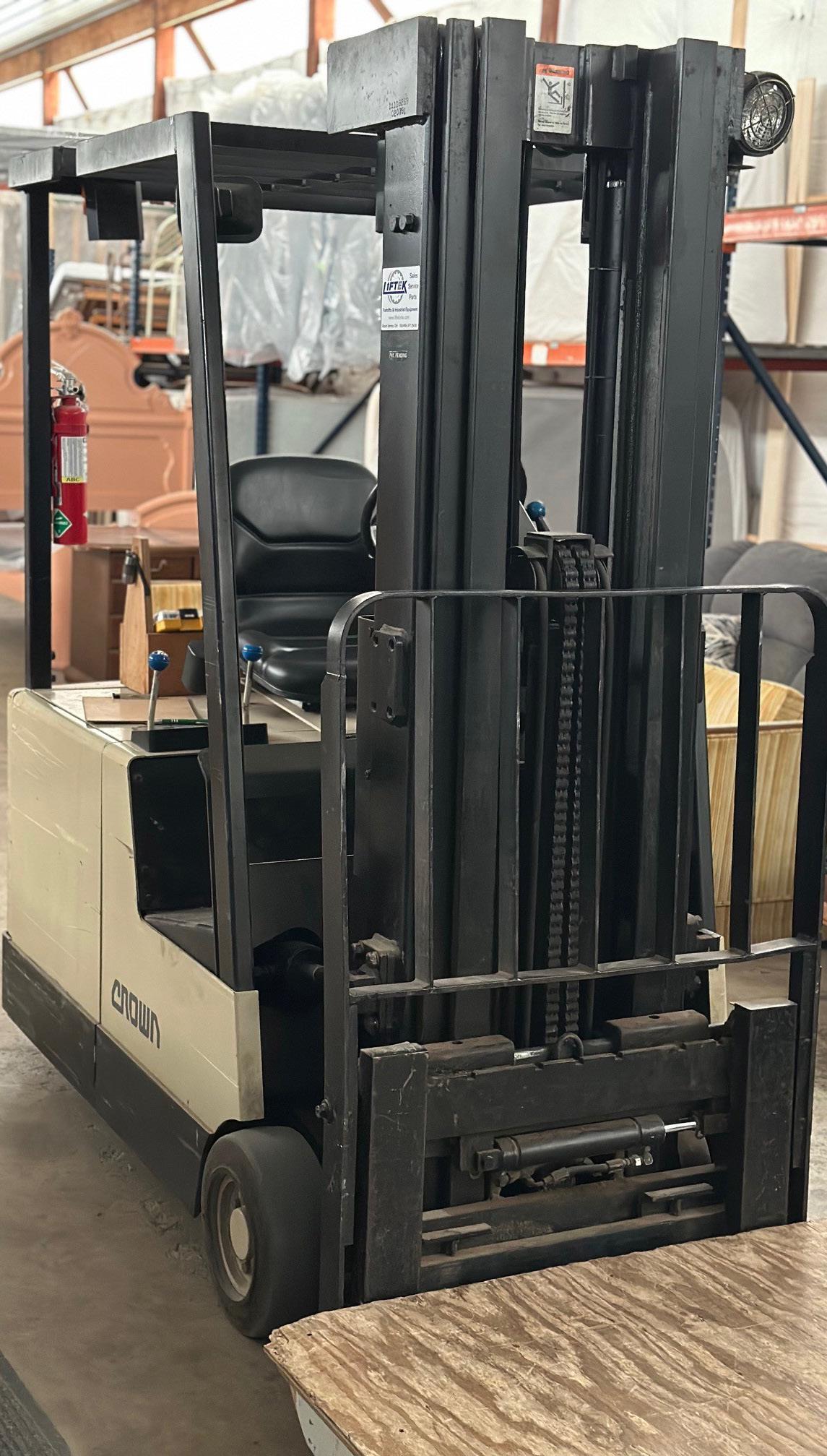

SUNDAY, JUNE 22nd 12-3 p.m.
The Works & Canal Market District in downtown Newark


This fun-filled family event is free and open only to members of The Energy Cooperative and their families. Enjoy free admission into The Works, a petting zoo, bounce houses and more. Please bring a copy of your bill or show it in SmartHub for family admission!






Electricity is essential for everyday life, but when combined with seemingly harmless items or elements, it can create a hazardous situation. View the grouped items below, then circle the two items that (when combined) create a potential electrical hazard.
Check your work in the answer key below.
1.

2.
3.
4.


5.
The Energy Cooperative’s business hours are Monday through Friday from 7:30 a.m. to 4:30 p.m.
• Member service: 740-344-2102
• Electric outages or emergencies: 888-535-5732
• Natural gas or propane emergency: 740-344-2102
If you see a downed power line or other electrical hazard, call 911 then call our outage line at 888-535-5732. Assume every downed power line is energized and dangerous.
If you smell rotten eggs or suspect a gas leak, leave the area immediately. Call 911 then call us at 740-344-2102.
